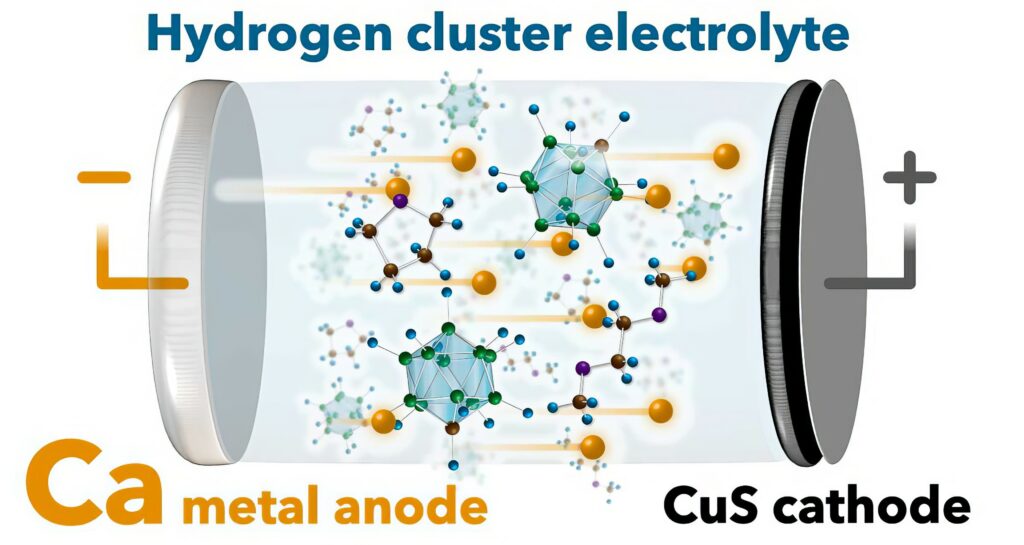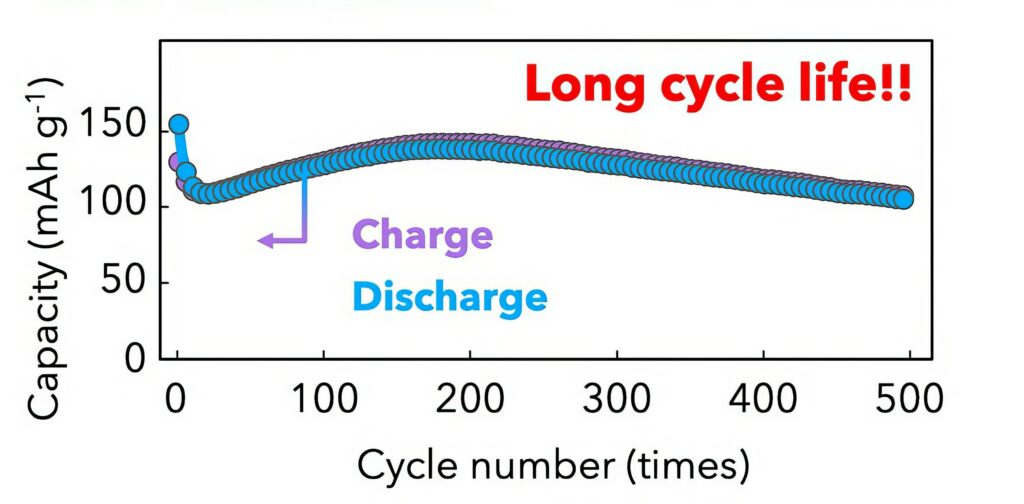Calcium shows promise for cells


Researchers in Japan have developed a promising rechargeable calcium metal battery with a long lifetime (writes Nick Flaherty). The prototype is capable of 500 cycles of repeated charging-discharging.
As the fifth most abundant element in Earth’s crust, calcium is widely available and inexpensive, and has a higher energy density potential than lithium. Like sodium, its properties are also thought to help accelerate ion transport and diffusion in electrolytes and cathode materials, giving it an edge over alternatives such as magnesium and zinc.
However, the lack of an efficient electrolyte and the absence of cathode materials with sufficient Ca2+ storage capabilities have proved to be the main stumbling blocks to commercialising the technology.
The team, at Tohoku University, had previously developed a fluorine-free calcium electrolyte based on a hydride cluster that showed improved electrochemical performances such as high conductivity and high electrochemical stabilities.
“For our current research, we tested the long-term operation of a calcium metal battery with a copper sulphide [CuS] nanoparticle/carbon composite cathode and a hydride-based electrolyte,” said Kazuaki Kisu, assistant professor at the university’s Institute for Materials Research.
CuS is also a natural mineral and has a layered structure that enables it to store a variety of cations, including lithium, sodium and magnesium. It has a large theoretical capacity of 560 mAh/g, which is two to three times higher than present cathode materials for lithium-ion batteries.
That could enable cells with an energy density of around 306 Wh/kg at a power density of 131 W/kg. A high-power cell would have a reasonable energy density, of 144 Wh/kg, at a high power density of 4000 W/kg,
The team used nanoparticles of carbon with the CuS to create a cathode capable of storing large amounts of calcium ions. When used with the hydride-type electrolyte, they produce a battery with a highly stable cycling performance. The prototype battery maintained 92% capacity retention over 500 cycles based on the capacity of the 10th cycle.
“Our study confirms the feasibility of calcium metal anodes for long-term operations, and we are hopeful the results will expedite the development of calcium metal batteries, Prof Kisu said.
ONLINE PARTNERS






















